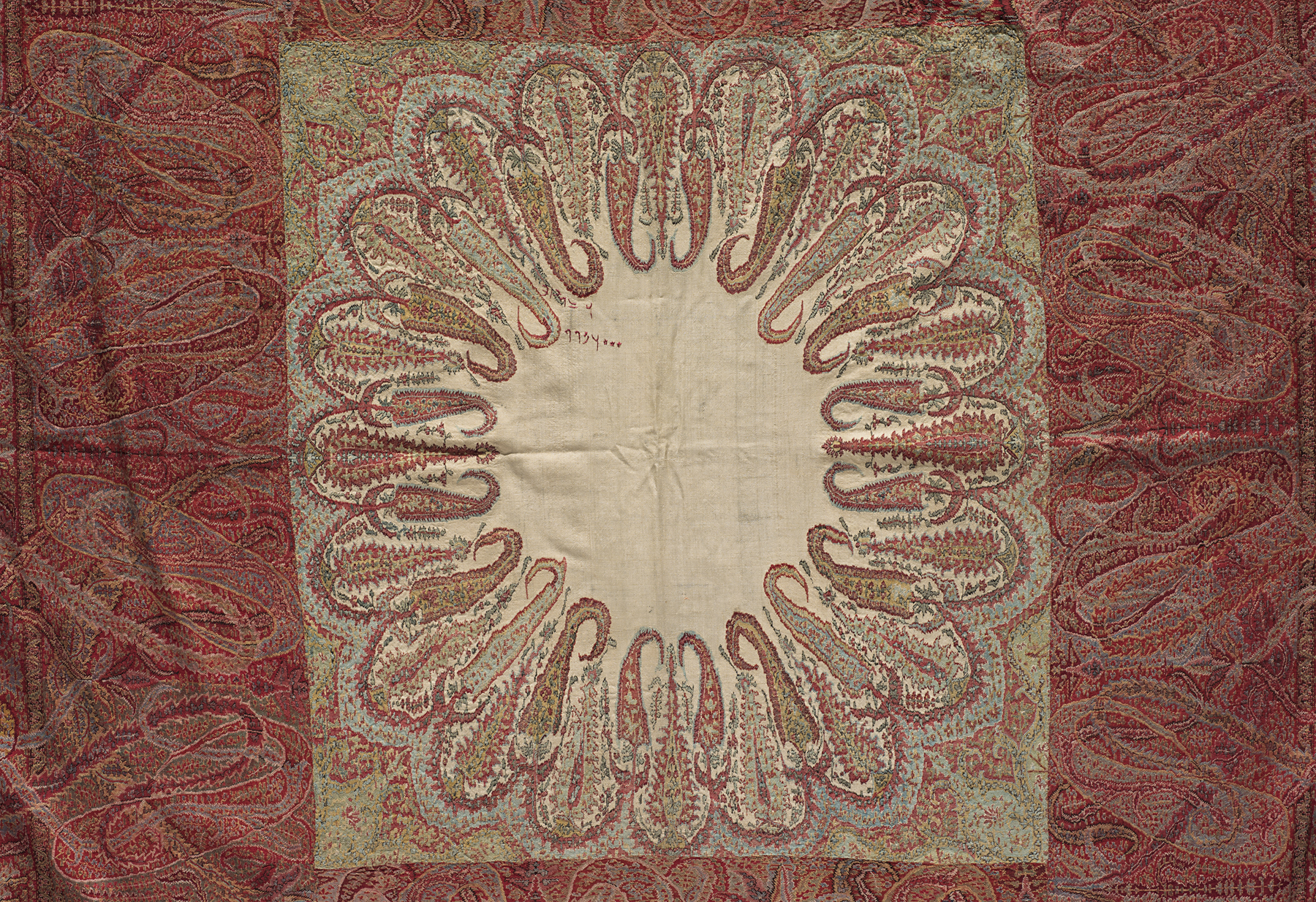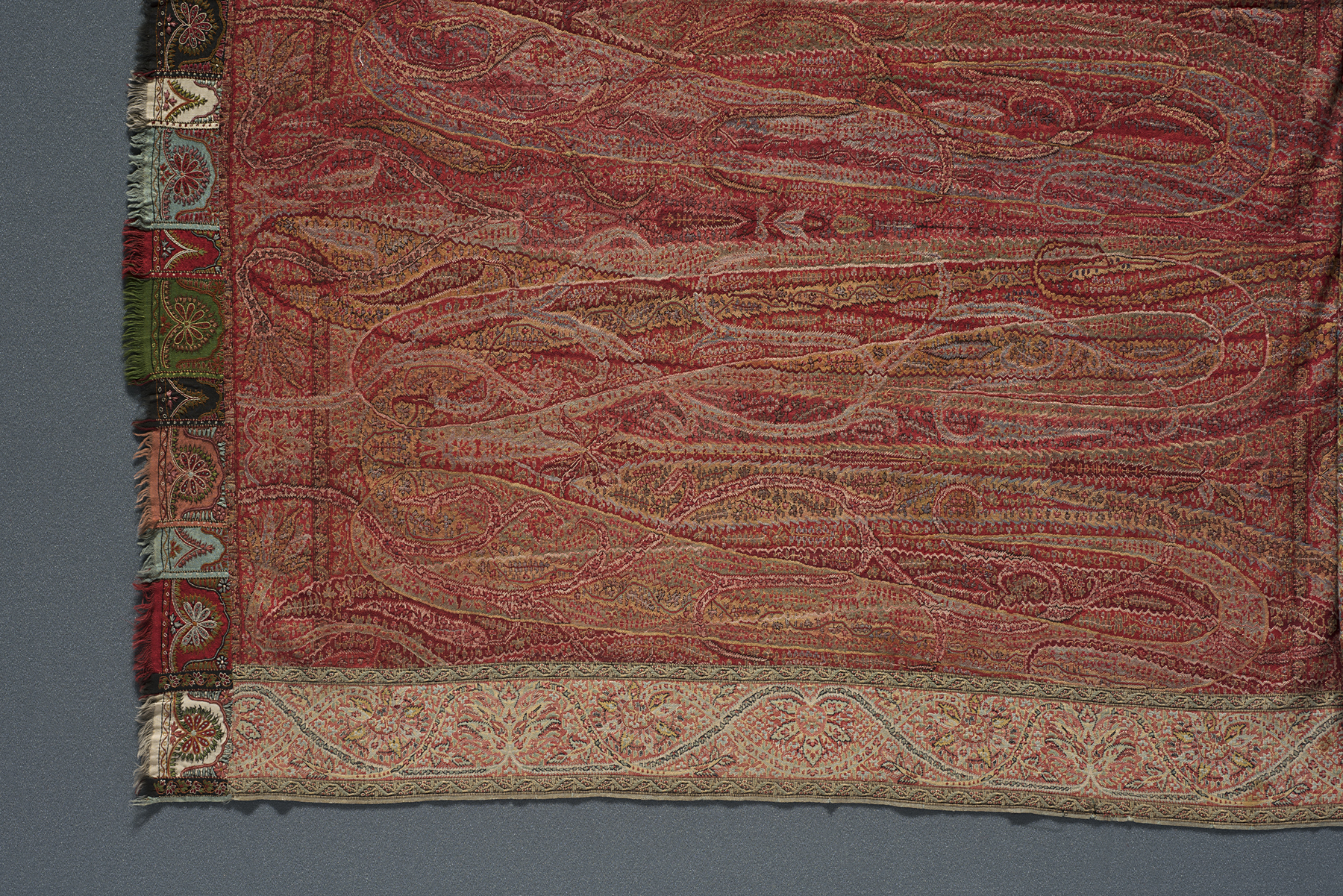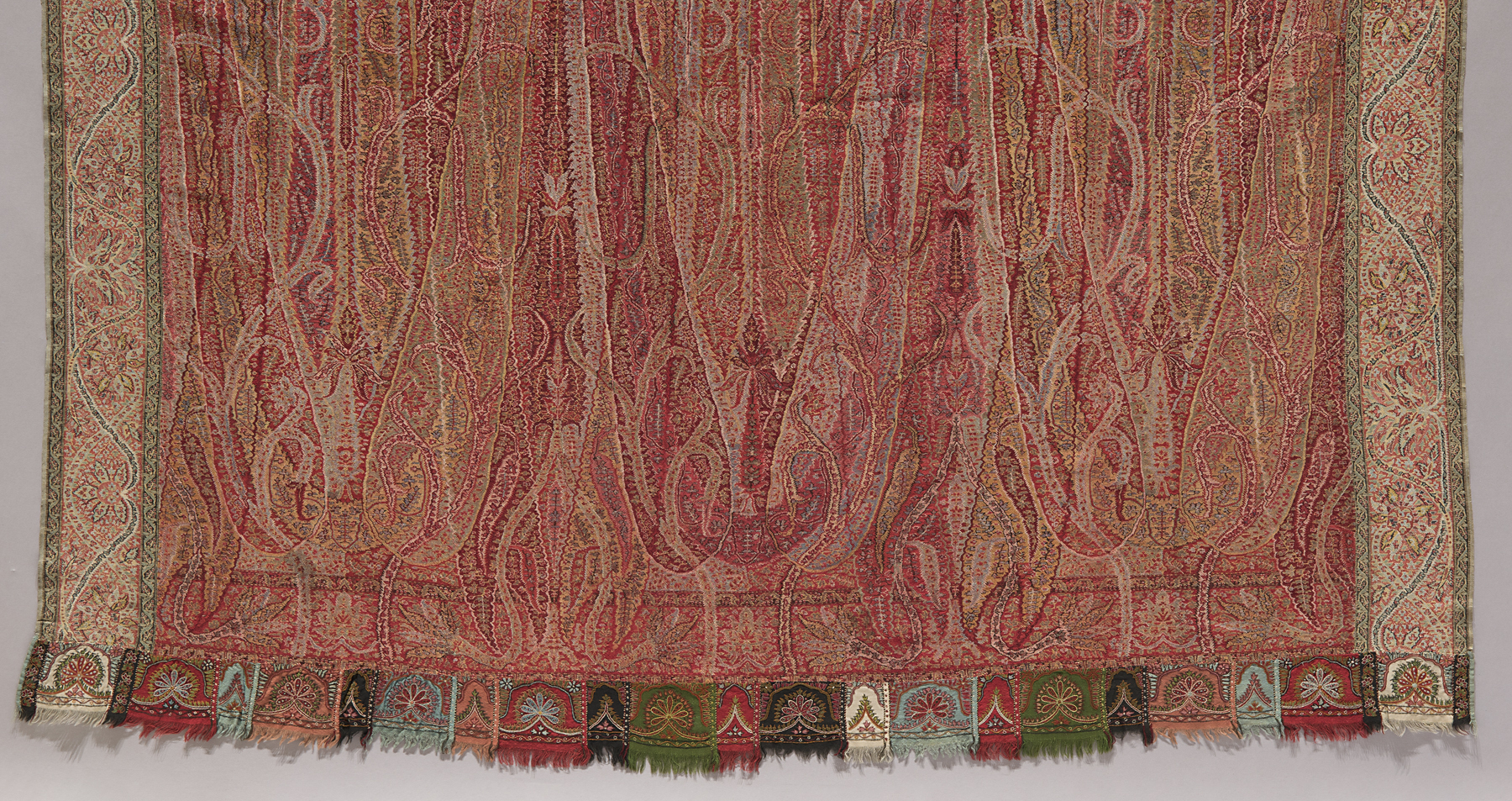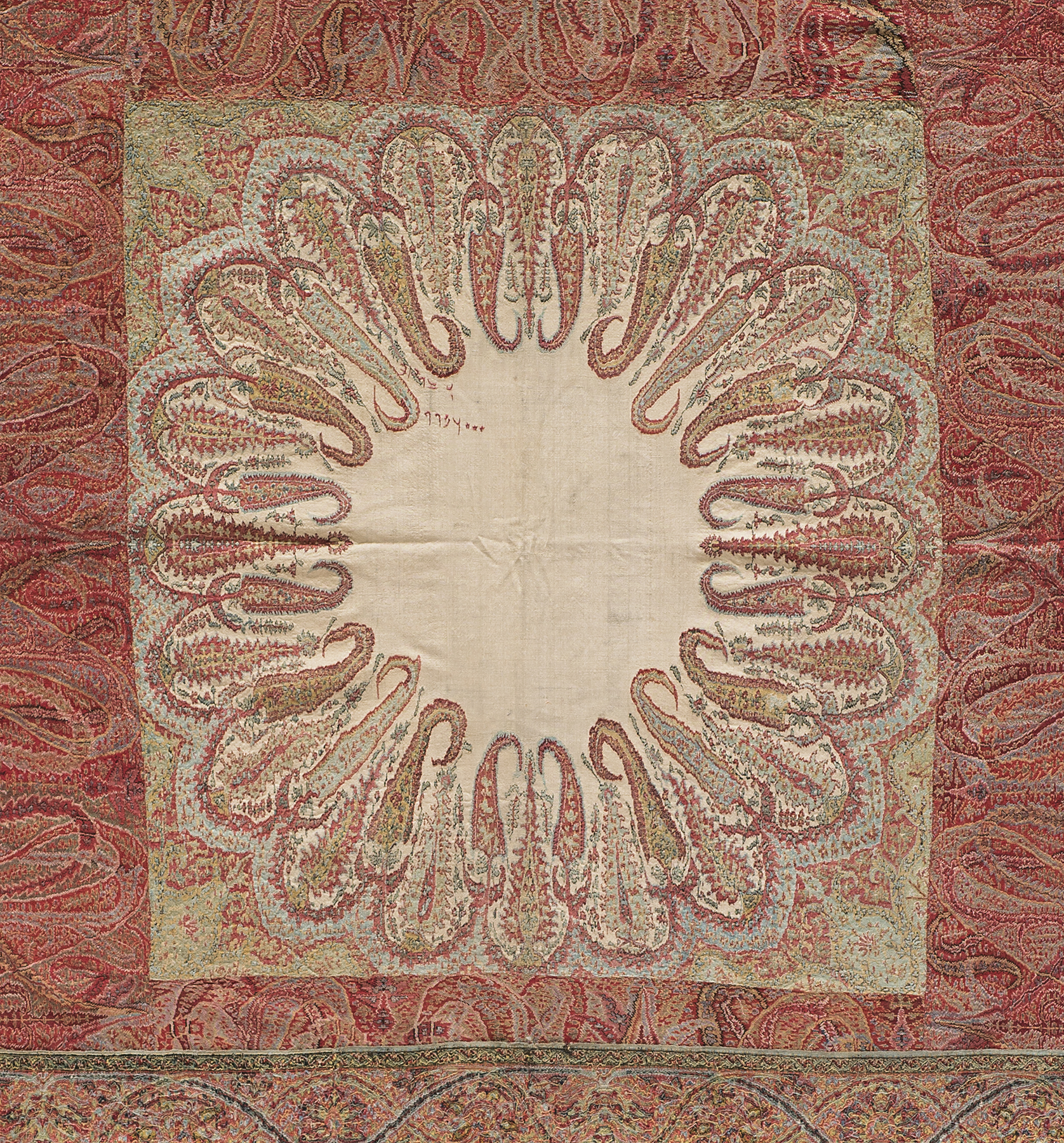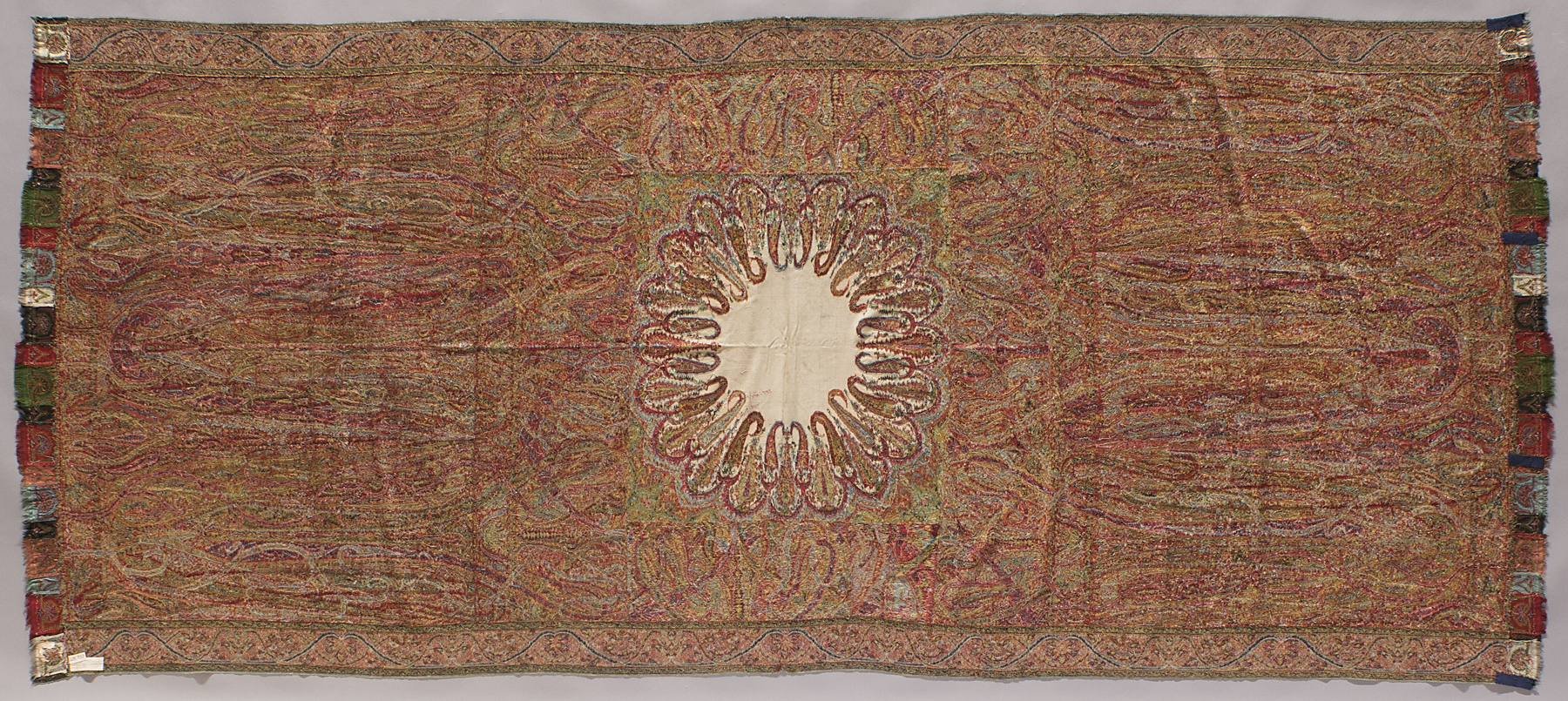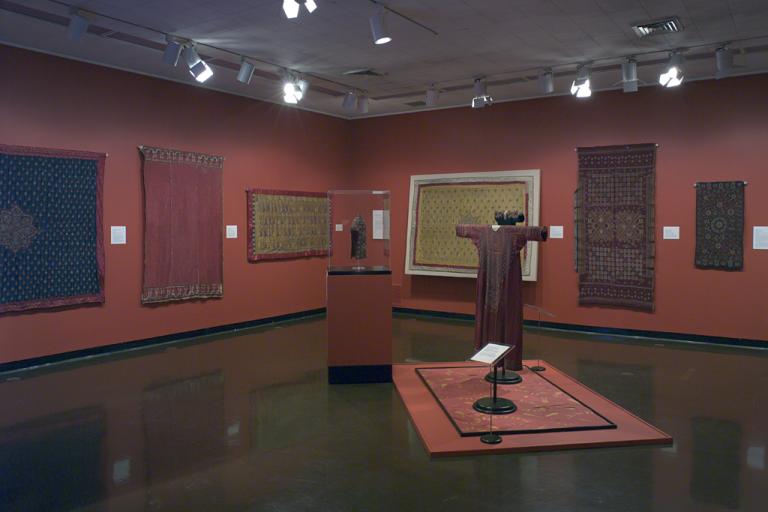Kashmir shawl, unknown maker from India
Artwork Overview
Kashmir shawl
, circa 1875–1899
Where object was made: Kashmir, India
Material/technique: embroidering; wool; cashmere; twill
Dimensions:
Object Length/Width (Length x Width): 315 x 138 cm
Object Length/Width (Length x Width): 54 5/16 x 124 in
Object Length/Width (Length x Width): 315 x 138 cm
Object Length/Width (Length x Width): 54 5/16 x 124 in
Credit line: William Bridges Thayer Memorial
Accession number: 1928.0752
Not on display
If you wish to reproduce this image, please submit an image request

